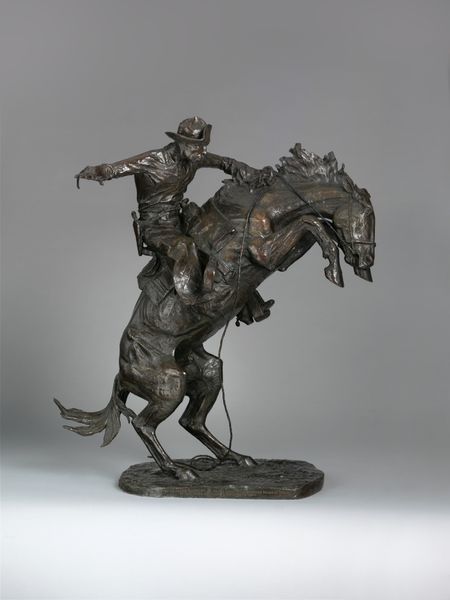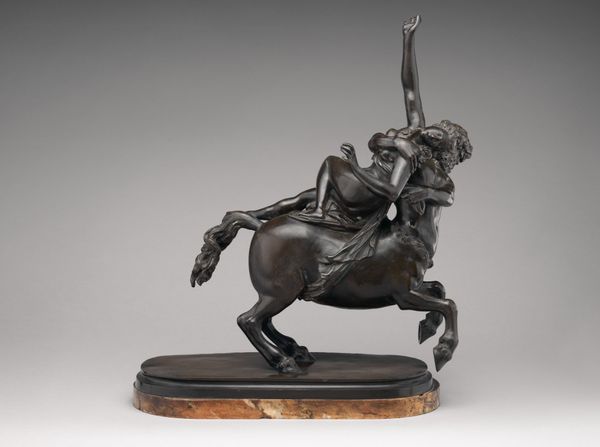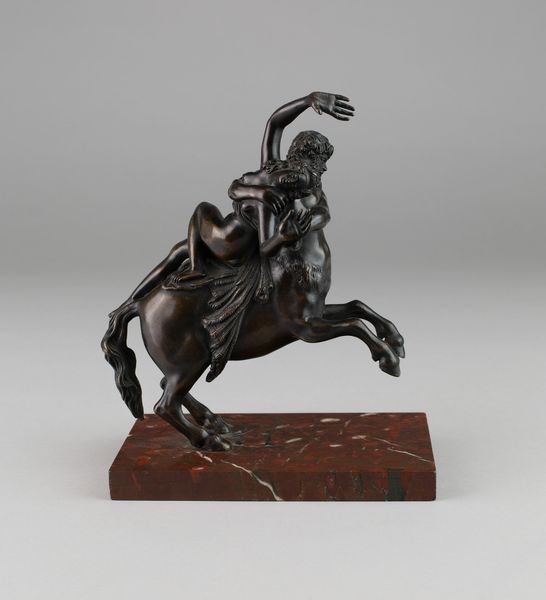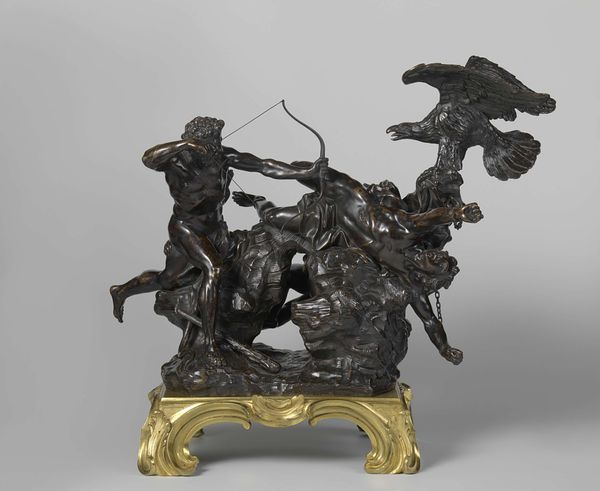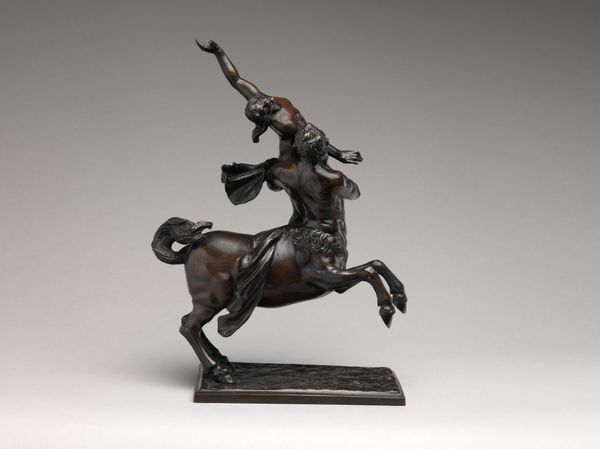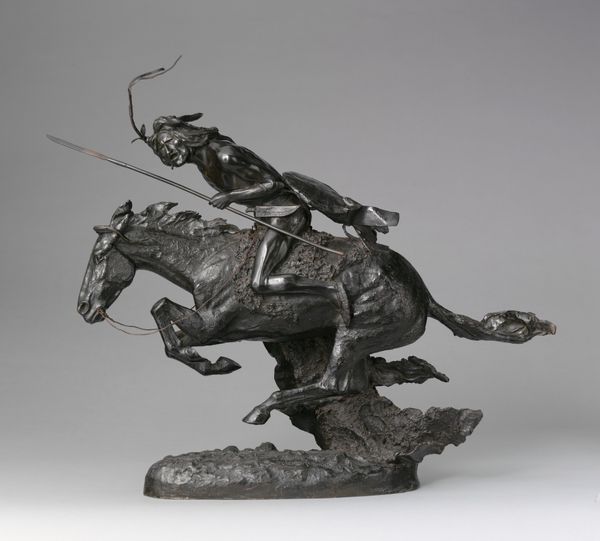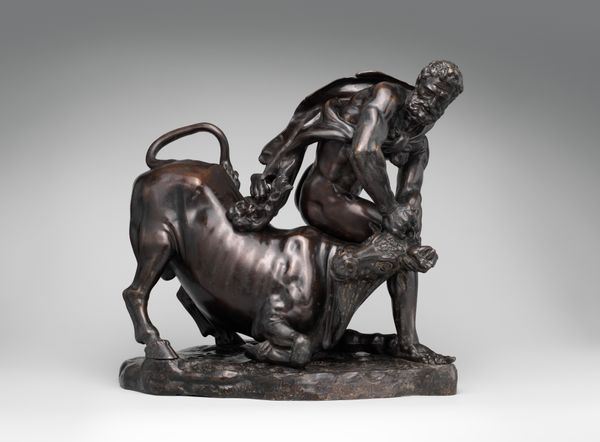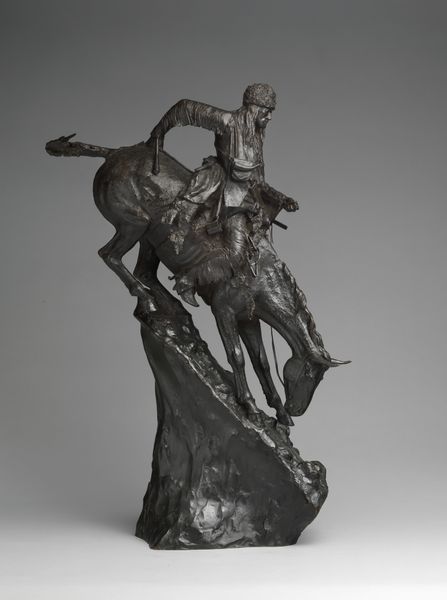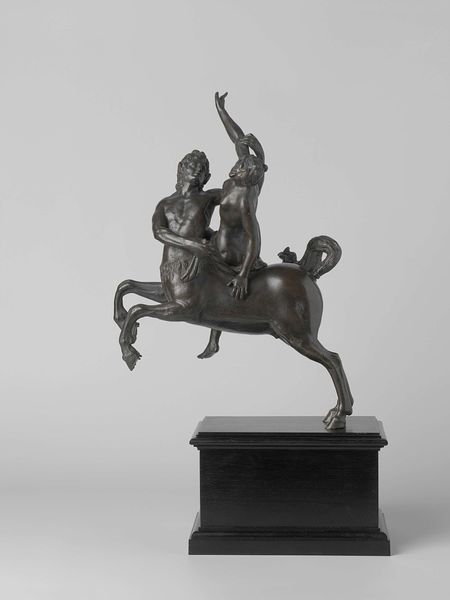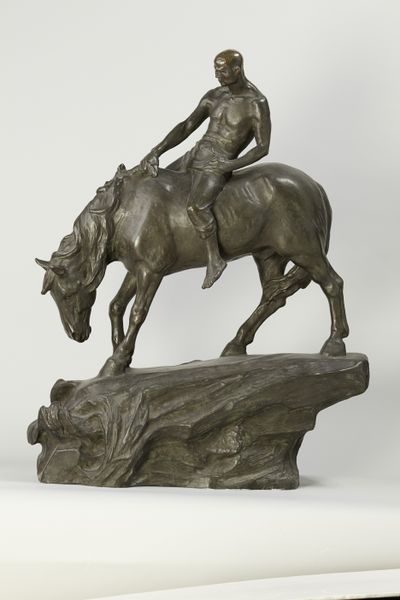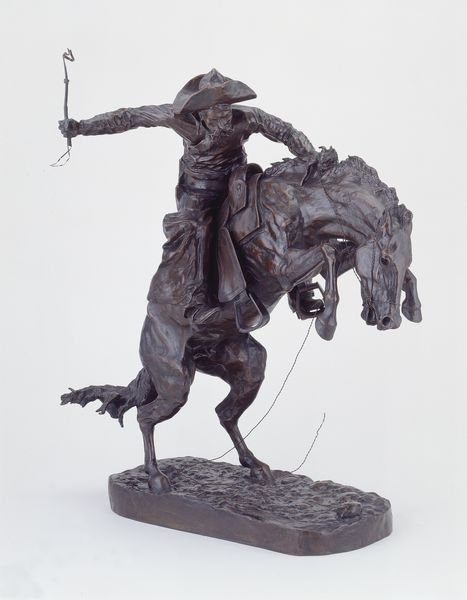
Dimensions: 44 x 34 1/2 x 16 in. (111.8 x 87.6 x 40.6 cm)
Copyright: Public Domain
Curator: Randolph Rogers’ bronze sculpture, "The Last Arrow," was created between 1879 and 1880. Editor: The first thing that strikes me is its incredible dynamism. The rearing horse, the poised archer, the fallen figure—it’s all captured in a frozen, violent moment. I am compelled by the intensity and action in this complex grouping of figures. Curator: Indeed, Rogers masterfully captured a narrative moment rife with symbolism. Notice how the Native American on horseback, drawing his last arrow, embodies the dwindling resources and the imminent demise of his way of life. This lone arrow carries the weight of a dying culture. Editor: I’m particularly drawn to the materiality of the bronze itself. Its reflective, dark surface enhances the drama, almost like stage lighting, highlighting the tension in each muscle. It's remarkable how Rogers manipulated this solid material to suggest such frantic movement and emotional vulnerability. It clearly shows that his process used expert labor, not just raw inspiration. Curator: Absolutely, the visual language here speaks of resilience against insurmountable odds. Consider also how the figure of the fallen warrior at the base anchors the whole composition—a stark reminder of loss and sacrifice, while emphasizing the narrative around Manifest Destiny. This imagery spoke very specifically to late 19th century sentiments of the American West. Editor: Right. It also makes me think about the labor involved in creating such a complex sculpture. Casting bronze on this scale required considerable technological expertise and collaboration; and how the social context shaped its purpose, not just in art, but how the history and trauma is translated into popular imagination through art production, thus feeding consumerism. Curator: It certainly encourages us to question the stories we tell ourselves about our own history. There are echoes of classical heroism and romanticism, filtered through a very particular American lens, yet those do not always fit neatly together, and reflect anxieties of this era. Editor: It certainly reveals more layers upon closer inspection—the artist's labor, the material presence of the bronze, and the historical narratives woven within the sculpture are captivating. Thank you. Curator: Thank you, exploring it together, has helped to highlight how Rogers invites a reconsideration of what ‘progress’ and 'inevitable history’ can mean when we look more deeply.
Comments
No comments
Be the first to comment and join the conversation on the ultimate creative platform.
